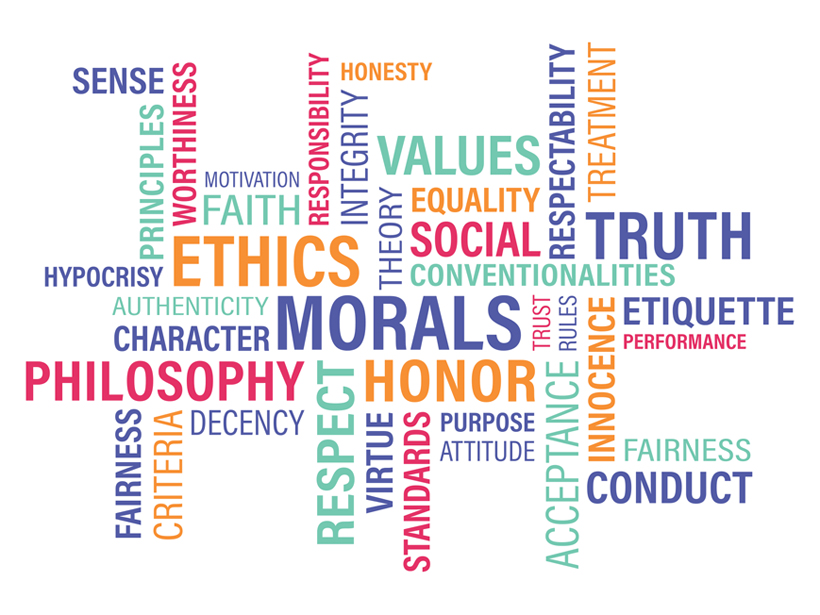As the headlines of the past few years have shown, scientific integrity and ethics in the geosciences are not dead boring topics. In fact, an open and engaged dialogue on scientific integrity and ethics aimed squarely at our research practices and the challenges of the Anthropocene is precisely what’s needed now. From the systemic sexual harassment that is marginalizing women and minorities in science, to the devastating effects of climate change on energy, food, and safety, the decisions we make as individuals and as a scientific community matter on a global scale.
Generally, scientific integrity focuses on the behavior of the individual scientist and includes such things as standards of professional behavior and knowledge, how to maintain the integrity of the scientific process, and rules regarding peer review and publications. Ethics underpins scientific integrity but is broader and includes the moral decisions we make regarding how we undertake science and the application of the scientific advancements we make. Ethics in science includes our responsibilities to society and our behavior and interactions with both the scientific community and the public.
Professional ethics codes are well established in the medical, biological and engineering fields, but the geosciences have lagged behind. We are all familiar with some of the dilemmas of bioethics, for example the ethics of cloning and designing human genetics, but what are the ethical challenges in the geosciences that we must address? In the last few years, the field of geoethics has emerged and is garnering significant attention through the focused efforts of several organizations, in particular the International Association for Promoting Geoethics. Climate change, famine, alternative energy, hazard vulnerability, and environmental health are just some of the issues addressed by geoethics.
The newly released AGU Special Publication Scientific Integrity and Ethics in the Geosciences tackles today’s ethical issues in research misconduct, presents the latest policies and codes for scientific integrity, examines publications and data ethics, discusses the emerging field of geoethics, and provides practical guidance and hands-on resources for teaching ethics within the geoscience curriculum and research environment.
The first section of the book presents the wave of new scientific integrity and ethics policies released since 2010, internationally, nationally, and federally. This includes the seminal Singapore Statement on Research Integrity that forms the core of AGU’s ethics policy and the just released National Academy of Sciences report Fostering Integrity in Research. These policies and others discussed in the book, are distinguished by traditional values of honesty and integrity and include new emphases on fairness, equity, and research stewardship.
The second section of the book focuses on the responsibility of professional societies in nurturing an ethically sound research and educational climate. These chapters explore who we are and who we need to be professionally, including the ground-breaking new policy from AGU that considers harassment, discrimination and bullying as part of research misconduct.
Section three examines publications and data. It lays bare the many challenges we have in peer review and publication along with some of the innovative solutions being implemented by the geosciences publications community. The ethics of the scientific process and research data lifecycle are discussed in depth and checklists of ethical questions are provided for planning, executing, publishing and communicating science.

The role of the geosciences as an ethical force in society is explored in section four which examines the concepts of value and the emerging field of geoethics. As geoscientists we need a strong ethical foundation and rigorous open dialogue as we are increasingly asked to apply our science to issues of risk, vulnerability, and sustainability.
The last section and the appendices of the book provide extensive research, discussion, and resources on best practices for teaching scientific integrity, ethics, and geoethics. Imbedding scientific integrity and ethics in our curriculum is essential for the future of the geosciences and for sound, science based decision-making on the future of Earth.
Scientific Integrity and Ethics in the Geosciences, 2017, 344 pp., ISBN: 978-1-119-06778-8, list price $99.95 (hardcover), $79.99 (e-book)
—Linda Gundersen, Editor, Scientific Integrity and Ethics in the Geosciences
Citation:
Gundersen, L. (2017), Ethics crucial for the future of the geosciences, Eos, 98, https://doi.org/10.1029/2018EO086205. Published on 08 November 2017.
Text © 2017. The authors. CC BY-NC-ND 3.0
Except where otherwise noted, images are subject to copyright. Any reuse without express permission from the copyright owner is prohibited.

